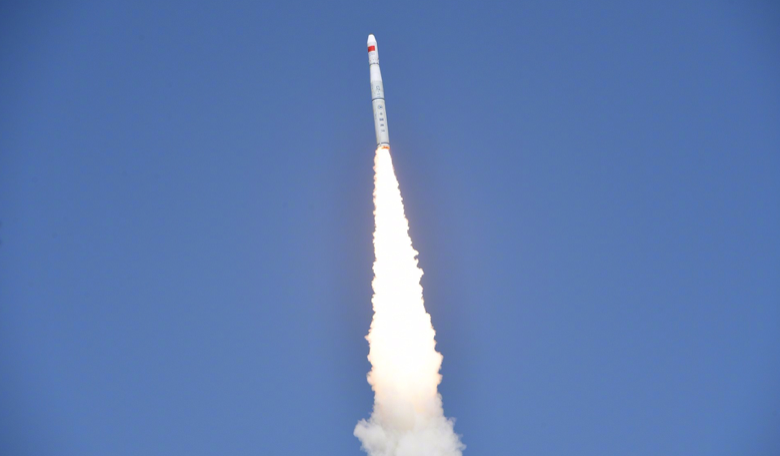A Long March 11 rocket blasting off from a mobile launch platform in the Yellow Sea signified a new chapter in China’s space industry, as the nation becomes the first to fully own and operate a floating sea launch platform.
The rocket, which is 20.8 metres in length and 2 metres in diameter, is designed and built by the China Academy of Launch Vehicle Technology and is the only solid-fuel carrier rocket in the Long March family.
Its small design offers quick deployment and after taking off from a platform on a large semi-submersible barge around 12.06pm local time (0406 GMT), it lofted a pair of “technical experiment” probes, called Bufeng, or Wind Catchers, and five commercial satellites into an orbit around 600 kilometres above the Earth.
The Wind Catchers are designed to measure sea-surface winds to help China forecast typhoons and other extreme weather events, said state media.
The mission is the first global seaborne space launch to have taken place in the last five years – the last was Russian-backed firm Sea Launch in 2014 – and is another milestone in China’s ambitious space programme.
Launching a rocket from the sea is said to provide a number of advantages from lowering costs, to the flexibility of being able to launch from a range of locations that would otherwise be inaccessible.
Sea launches “can flexibly select the launch point and touchdown area to meet the needs of various payloads for different orbits,” said a statement on the administration’s website.
The launch is likely to be the first of many, indeed a premise that has already been hinted at by Li Tongyu, Long March 11's project manager according to China News. Tongyu has reportedly said that more sea-based missions will be conducted to assess their capacity of lifting payloads into various orbits.
He also said that the Chinese academy plans to build a coastal port dedicated to supporting seaborne launch missions that will one day be capable of launching bigger and more powerful liquid-propellant rocket types in addition to the smaller solid-propellant rockets like the Long March 11.
This will be a move away from normal Chinese space launch sites which are typically located inland for defence purposes. The coastal port will therefore aid in boosting China’s commercial space sector, which the nation is striving to expand.











